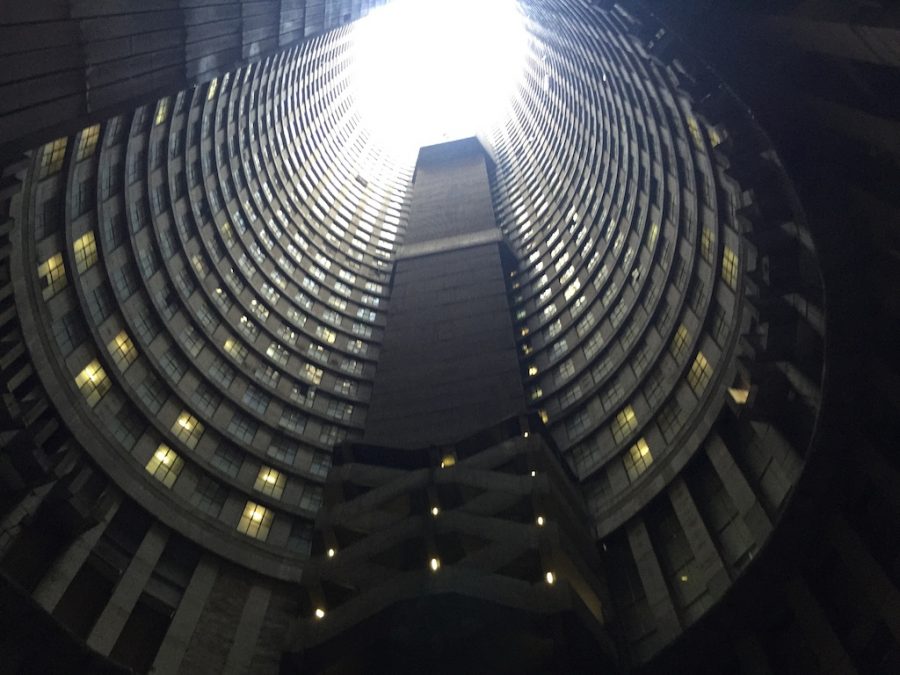
A Jaw-Dropping Tour Inside Johannesburg’s Ponte City
I have been on many tours, and I’ve been to many museums around the world, but I don’t think any of them had me as psyched as the one I did today – the infamous and iconic Ponte City in Johannesburg. Ponte’s designer, the 29-year-old Rodney Grosskopf, probably didn’t start out with the intention of creating something iconic, but because […]

I have been on many tours, and I’ve been to many museums around the world, but I don’t think any of them had me as psyched as the one I did today – the infamous and iconic Ponte City in Johannesburg.

Ponte’s designer, the 29-year-old Rodney Grosskopf, probably didn’t start out with the intention of creating something iconic, but because of its sheer size and shape and location, the cylindrical behemoth identifies the Joburg skyline as much as the Sydney Opera House does Sydney’s. Today it’s become a model for the regeneration and revitalisation of the inner city that is going on – from Braamfontein to Maboneng and now here.
However, let’s get the horror stories we’ve all heard about Ponte out of the way first.
It was called Suicide City because of the number of people who jumped off it, on the inside and the outside. Immigrants from Africa flooded in after the white flight to the suburbs, and it became know by nicknames such as Little Zaire. So much garbage was thrown down its core that the level of putrefaction rose for many storeys. Then there were the gangs, the prostitutes, the illegal landlords. It could have been a place out of the sci-fi movie “District 9”.
Well, many of those things are (or were) true, even the “District 9” reference, because they filmed part of it (plus “Chappie” and the latest installment of “Resident Evil”, among other movies) in its core – but more of that later.

With unhindered and unbelievable views onto Hillbrow and then out past the Hillbrow Tower as far as Sandton and Northcliff, our guide James gives us a rundown of the building’s very colourful history. Constructed in 1975, the 400-plus apartments were “the” place to live when it opened. On the top floors were three-storey apartments. The one we meet in, on the 50th floor, is 120-square-meters (rental R6,000 a month) and was one floor of a former triplex, which also once had a sauna.

The tour of the 54-storey building and the surrounding area – Berea and Hillbrow – is run by a nonprofit group called Dlala Nje. Started by ex-Mail & Guardian journalist Nickolas Bauer and Mike Luptak, profits from the tours are used to fund a creche on the ground floor of Ponte, as well as other programmes to benefit the community.


By the 1980s already, Ponte fell within a “grey area” in Johannesburg where races were more at ease living and mixing, even though apartheid had not yet been abolished. But gang activity started within the building so that by the 1990s already, Ponte had become a virtual no-go zone.

As James tells it, law enforcement used to fly helicopters outside to see what was going on inside, but people kept their curtains closed, and the colours told you who was where: black for gangsters, red for prostitutes, white for families. Things got so bad that Ponte became one of Johannesburg’s “hijacked” buildings, run by illegal landlords. There was even talk of turning it into a prison.

By 2001 plans to reclaim Ponte began. A search apparently had to be done to find who actually owned the building, and it was the Kempston Group. A husband-and-wife team, Elma and Danie Celliers, were put in charge and hired red ants to come in and evacuate all the illegal residents. A massive renovation programme began, which included refurbishing the eight elevators.
What was found inside the flats was beyond any sci-fi movie. One apartment on the 35th floor they had to break the door down, and inside they found a virtual jungle, with massive tomato plants growing even in the sinks. The garbage in the core rose up 14 storeys high, and had to be cleaned out by hand. Two private investors got involved, and there were plans for an upgrade for the 2010 World Cup, but that didn’t work out when the two investors apparently absconded.

More recently a woman named Mrs Beet took over running the building, which is still owned by Kempston, and James says they call her Gogo, Zulu for “grandmother” because of the way she runs the building. Ironically, Beet apparently worked in the office of former apartheid president PW Botha. To get into the building you have to have your fingerprint registered – a method more and more buildings in the inner city are using for security – and residents late with rent quickly get denied access to the building and have their possessions put outside.
Of the 3,500 residents, about 10 percent are white and, as James says, there are, curiously enough, a lot of Vendans. Beet apparently does not like having students as residents because they are unreliable payers. The building itself, meanwhile, earns a fair amount of money on the side. Vodacom pays R500,000 a month to put its sign on the roof, and movie producers pay R100,000 a day to shoot in the core.
To go on one of Dlala Nje’s tours of Ponte City and Hillbrow contact them here.
